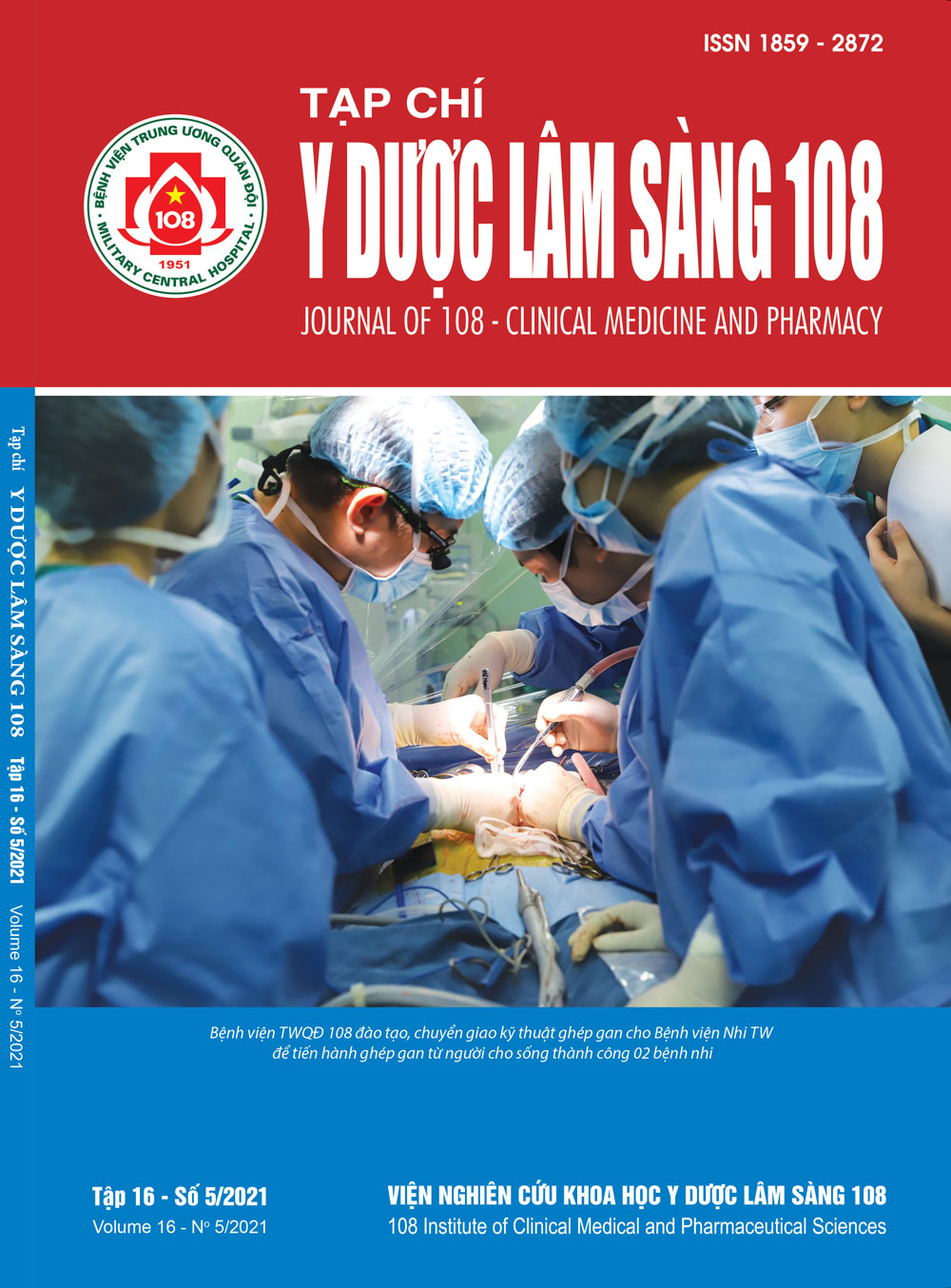Clinical and endoscopic characteristics of peptic ulcer bleeding in patients taking antithrombotic drugs
Main Article Content
Keywords
Abstract
Objective: To study the clinical and endoscopic characteristics of peptic ulcer bleeding in patients taking antithrombotic drugs. Subject and method: A cross-sectional descriptive study on 49 patients with peptic ulcer bleeding who used antithrombotic drugs at 108 Military Central Hospital. Result: The mean age of patients was 68.98 ± 10.54 years, most of them were taking antiplatelet drugs (65.3%). The most common clinical symptoms were melena (73.5%) and hematemesis (44.8%). Upper GI endoscopy showed gastric or duodenal ulcers with Forrest IIc/III accounted for the highest percentage. The risk of gastrointestinal bleeding in patients using antiplatelet agents was 4.03 with 95%CI ranging from 1.16 to 10.00 (p<0.05). Conclusion: Peptic ulcer bleeding in patients receiving antithrombotic drugs occurs mostly among elderly patients, most are mild and moderate bleeding. Being treated with antiplatelet agents increases the risk of gastric ulcer bleeding up to 4.03 times, compared with that of non-antiplatelet antithrombotic drugs.
Article Details
References
2. Allen PB, Tham TCK (2016) Approach to upper gastrointestinal bleeding. Gastrointestinal Emergencies, John Wiley & Son: 12-18.
3. BMJ (2002) Antithrombotic trialists collaboration collaborative meta-analysis of randomised trials of antiplatelet therapy for prevention of death, myocardial infarction, and stroke in high risk patients. BMJ 324(7329): 71-86.
4. Bytzer P, Connolly SJ, Yang S et al (2013) Analysis of upper gastrointestinal adverse events among patients given dabigatran in the RE-LY trial. Clin Gastroenterol Hepatol 11(3): 246-252.
5. Deutsch D, Romegoux P, Boustiere C et al (2019) Clinical and endoscopic features of severe acute gastrointestinal bleeding in elderly patients treated with direct oral anticoagulants: A multicentre study. Therap Adv Gastroenterol 12: 1756284819851677.
6. Hippisley-Cox J, Coupland C (2014) Predicting risk of upper gastrointestinal bleed and intracranial bleed with anticoagulants: Cohort study to derive and validate the QBleed scores. Bmj 349: 4606.
7. Forrest JAH, Finlayson NDC, Shearman DJC (1974) Endoscopy in gastrointestinal bleeding. The Lancet 304(7877): 394-397.
8. Tabibian N (1989) Acute gastrointestinal bleeding in anticoagulated patients: A prospective evaluation. Am J Gastroenterol 84: 10-12.
9. Thomopoulos KC, Mimidis KP, Theocharis GJ et al (2005) Acute upper gastrointestinal bleeding in patients on long-term oral anticoagulation therapy: Endoscopic findings, clinical management and outcome. World J Gastroenterol 11(9): 1365-1368.
10. ACG (2021) Clinical Guideline: Upper Gastrointestinal and Ulcer Bleeding. The American Journal of Gastroenterology 116(5): 899-917.
 ISSN: 1859 - 2872
ISSN: 1859 - 2872
